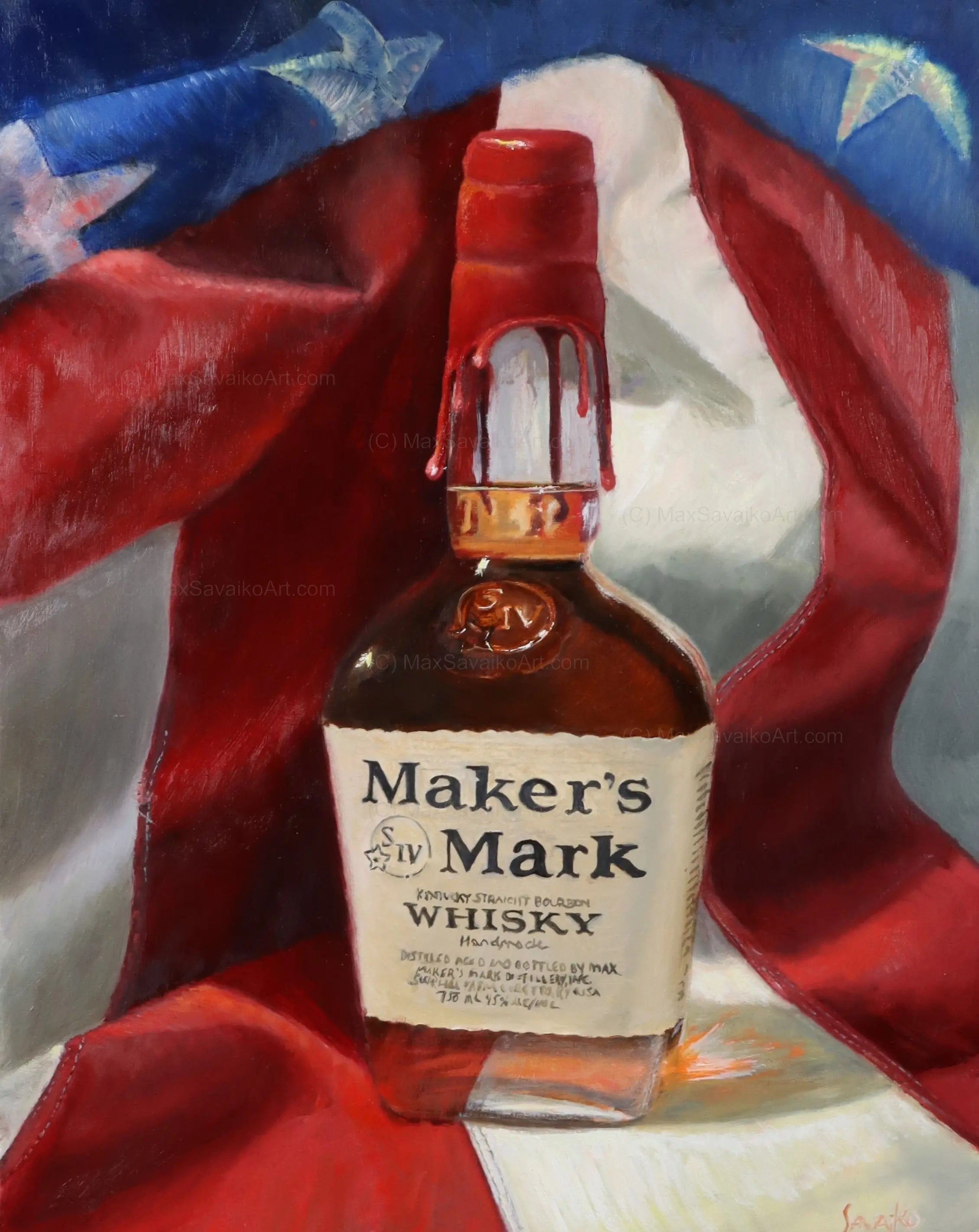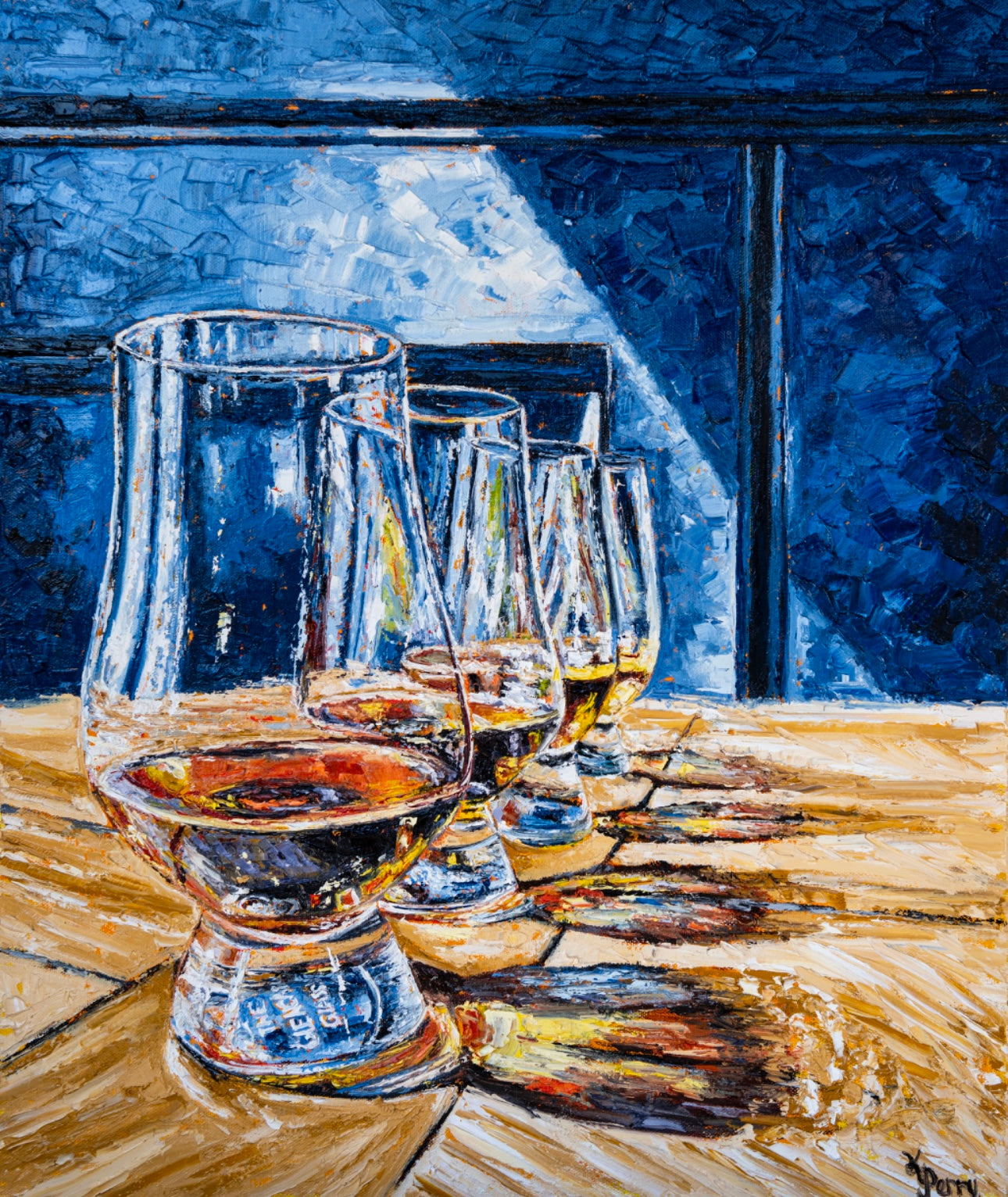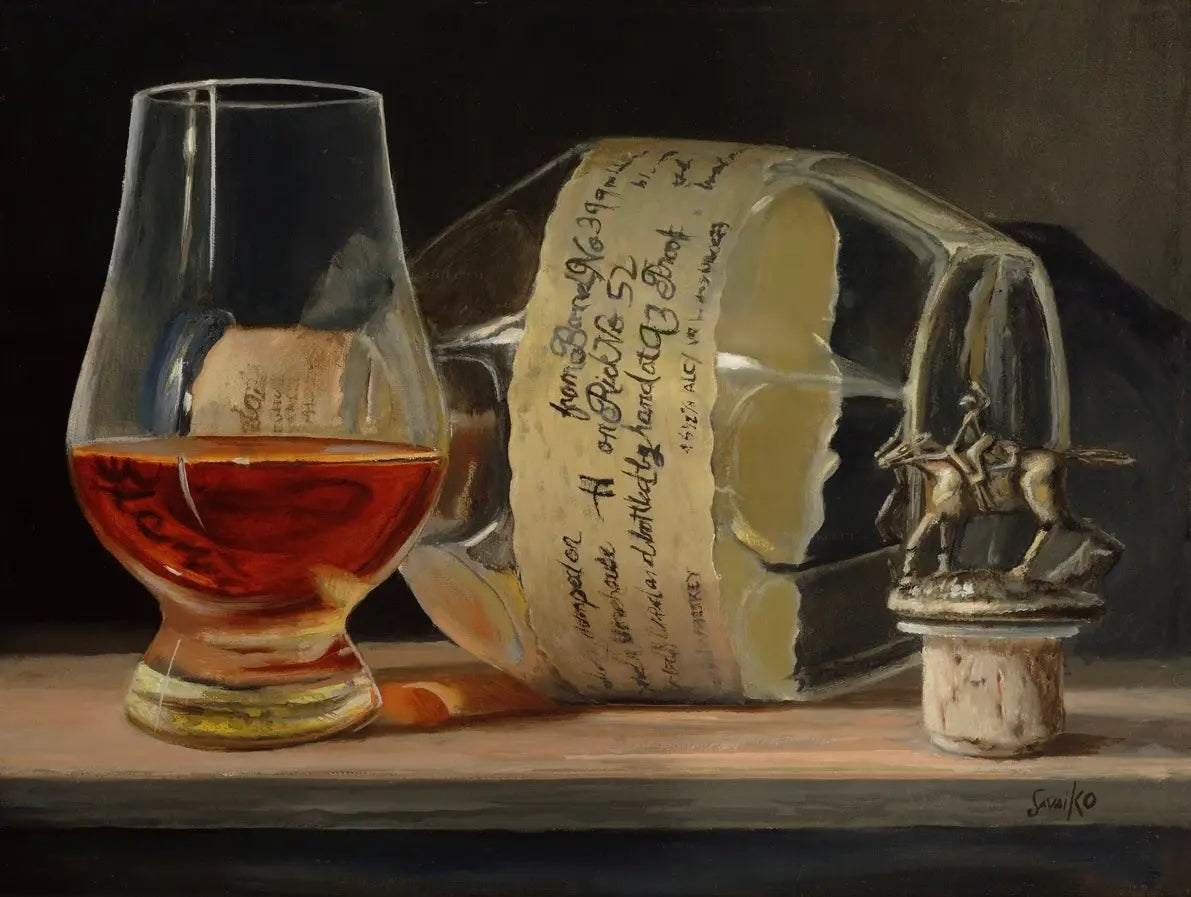Limited Edition Bourbon Art: Why Collectors Are Crowding to One-of-a-kind Finds
Limited Edition Bourbon Art: Why Collectors Are Crowding to One-of-a-kind Finds
Blog Article
The Relevance of Whiskey Art in Celebrating Heritage and Craftsmanship in the Beverage Sector
The detailed partnership in between scotch art and the event of heritage and craftsmanship within the drink sector can not be overemphasized. Through thoughtfully made tags and bottles, bourbon brands envelop their historical origins and the artisanal skills that define their production approaches. This creative dimension not just boosts market charm but additionally works as a channel for cultural narration, promoting a deeper link between the craft and the customer. As we explore the numerous aspects of this topic, fascinating concerns about the influence of contemporary trends on typical methods arise, motivating further examination.
The Historical Origins of Whiskey
At the heart of scotch's attraction lies an abundant tapestry of historic roots that map back to old worlds. The beginnings of whiskey can be linked to the purification practices of the Sumerians and Babylonians around 2000 BCE, where early kinds of fermented grain drinks began to emerge. It was in the Center Ages that the art of distillation developed substantially, specifically in Ireland and Scotland, leading to the creation of scotch as we understand it today.
The term "bourbon" itself stems from the Gaelic word "uisce beatha," implying "water of life." This phrase highlights the social value of bourbon in Celtic societies, where it was frequently related to routines, parties, and public bonding. By the 15th century, purification came to be a recognized craft within monastic communities, leading the way for the establishment of legal distilleries.
As trade routes expanded, whiskey's popularity grew, transcending regional boundaries and capturing the interest of connoisseurs worldwide. Bourbon Art. This historical journey reflects not just the workmanship behind bourbon manufacturing however likewise its important function in cultural and social contexts, marking it as a significant drink throughout background
Artistic Expression in Branding
Scotch branding stands as a compelling crossway of artistry and commerce, where aesthetic identification plays a vital function fit consumer assumption. The aesthetics of bourbon tags, product packaging, and advertising materials mirror not just the brand's story yet likewise its core values and heritage. With imaginative expression, distilleries communicate a narrative that reverberates with customers, evoking emotions and triggering connections.
Making use of color, typography, and images in branding serves to set apart products in a saturated market. Typical themes might evoke a feeling of credibility and craftsmanship, while modern-day designs can symbolize innovation and forward-thinking. This tactical imaginative direction improves brand name recognition and loyalty, permitting consumers to create an individual relationship with the scotch they pick.
Moreover, creative expression in branding usually works as an event of local heritage. Distilleries regularly incorporate regional signs or historic references into their styles, developing a local color that invites consumers to engage in a more comprehensive cultural experience. Ultimately, the creativity behind scotch branding not just boosts aesthetic allure but also enhances the general story of the brand name, fostering a much deeper recognition for the workmanship and heritage embedded in each bottle.
Workmanship in Bottle Style
The artistry obvious in scotch branding expands past visual identity to include the craftsmanship included in bottle style. Each bottle acts as a vessel not just for the spirit within, but also for the story it outlines its top quality, custom, and origin. The design process calls for thorough focus to information, as aspects such as shape, material, and closure contribute significantly to the total assumption of the scotch.
Craftsmanship in container layout includes selecting high-quality glass that can boost the scotch's color and quality, while likewise offering a responsive experience for the customer. The silhouette of the container should be both aesthetically enticing and practical, often mirroring the heritage of the brand. Many distilleries select distinct forms or embossed logo designs that evoke a feeling of authenticity and background.
Furthermore, the tag style and typography play an essential duty in communicating the brand name's narrative. Realism Art. A well-crafted bottle not just captivates the customer's eye but likewise enhances the brand's dedication to quality and practice. In this way, the workmanship of container style comes to be an important facet of the whiskey experience, merging virtuosity with a profound respect for heritage
Social Significance of Scotch Art
Commemorating tradition and craftsmanship, the social significance of scotch art goes beyond mere looks, linking with the historical and social my blog stories of the areas from which it comes from. Each container works as a canvas, depicting the distinct tales, mythology, and traditions that have shaped regional whiskey-making techniques. The intricate designs typically mirror the heritage of the distillers, including symbols and motifs that resonate with the culture and values of their neighborhoods.

Additionally, scotch art plays a vital function in public gatherings and events, acting as a tangible web link in between people and their shared experiences. By appreciating the virtuosity in bourbon packaging, customers grow a much deeper understanding and respect for the craft, eventually improving their enjoyment of the beverage itself.
Modern Trends in Scotch Discussion
Over the last few years, the presentation of scotch has actually advanced to reflect contemporary tastes and patterns while still recognizing traditional craftsmanship - Limited Edition. Distilleries are significantly focusing on aesthetic elements that improve the general alcohol consumption experience, linking the gap between heritage and modernity
Innovative bottle styles have emerged, commonly including lasting products and imaginative tags that tell compelling tales. Many brands now collaborate with local artists, infusing their products with unique aesthetic expressions that reverberate with customers. In addition, limited-edition launches are usually packaged in collectible containers, including worth and allure for aficionados.

Conclusion
In verdict, bourbon art offers as a crucial channel for expressing the heritage and craftsmanship inherent in the drink market. With elaborate branding, innovative container styles, and culturally considerable artistic website link components, bourbon brands efficiently recognize their practices and link with consumers.


Workmanship in bottle layout includes choosing top quality glass that can boost the scotch's color and quality, while likewise providing a responsive experience for the consumer. In this way, the workmanship of bottle layout ends up being a vital facet of the whiskey experience, combining creativity with a profound regard for heritage.
In conclusion, bourbon art serves as an essential channel for sharing the heritage and craftsmanship hop over to these guys inherent in the beverage sector.
Report this page